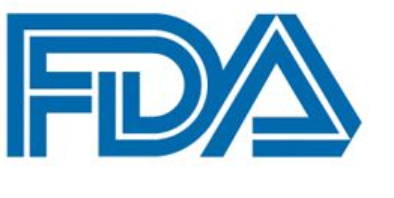Article
FDA Grants Breakthrough Therapy Designation to Sotorasib for KRAS G12C–Mutant Advanced or Metastatic NSCLC
Author(s):
December 8, 2020 - The FDA has granted a breakthrough therapy designation to sotorasib for use as a potential treatment in patients with KRAS G12C–mutated locally advanced or metastatic non–small cell lung cancer.

The FDA has granted a breakthrough therapy designation to sotorasib (formerly AMG 510) for use as a potential treatment in patients with KRAS G12C–mutated locally advanced or metastatic non–small cell lung cancer (NSCLC), as determined via an FDA-approved test, after at least 1 previous systemic therapy.1
The agent was also accepted into the regulatory agency’s Real-Time Oncology Review (RTOR) Pilot Program, the goal of which is to explore a more effective review process dedicated to making safe and effective therapies available to patients as early as possible.
The designation and RTOR are supported by data from the phase 2 CodeBreak 100 trial (NCT03600883), which showed that sotorasib elicited durable responses in patients with KRAS G12C–mutated advanced NSCLC who had progressed on a median of 2 prior lines of treatment.2
The small molecule inhibitor demonstrated an overall response rate (ORR) that was consistent with previous data reported in an earlier phase 1 trial that had been done in patients with advanced disease who were given a daily 960-mg dose of the agent. More than 50% of patients who responded to sotorasib continued to respond and were still on treatment at data cutoff.
The agent also showcased comparable safety and tolerability to what was seen in the phase 1 trial.
Detailed data from the phase 2 trial is expected to be submitted for presentation at the IASCLC World Congress on Lung Cancer.
“For more than 40 years, scientists have been trying to target KRAS. Today’s news is a welcome update for the many [patients with] NSCLC with the KRAS G12C mutation, who currently have no targeted therapies,” Bonnie J. Addario, cofounder and board chair of the GO2 Foundation for Lung Cancer, stated in a press release. “We are pleased that the FDA and Amgen recognize the unmet need for these patients and are working to make new treatment options available as quickly as possible.”
Data from a subgroup of 59 heavily pretreated patients with KRAS G12C–mutated NSCLC who were included in the phase 1 trial showed that the small molecule inhibitor elicited a confirmed ORR of 32.2%, with a disease control rate (DCR) of 88.1%.3
The CodeBreaK 100 trial enrolled a total of 129 patients; of these patients, 59 had NSCLC, 42 had colorectal cancer, and 28 had any of 11 other solid tumor types. Within the NSCLC subgroup, 4 cohorts were administered a different dose of the agent daily: 180 mg (n = 3), 360 mg (n = 16), 720 mg (n = 6), and 960 mg (n = 34). Across all dose levels, a reduction in tumor size was reported. However, agents who received the agent at a dose of 960 mg appeared to experience the most efficacy with acceptable tolerability. As a result, the 960-mg dose of the small molecule inhibitor was evaluated in the expansion phase of the research.
The primary end point of the trial was safety, and secondary end points comprised ORR, DOR, DCR, and progression-free survival (PFS). At a median follow-up of 11.7 months, 14 patients were still receiving sotorasib. Most of the 45 participants who discontinued treatment did so because of disease progression.
The median age of patients on the trial was 68 years and 59.8% were female. Almost 90% of patients were current or former smokers. All patients had received prior treatment with platinum-based chemotherapy, and most had received prior immunotherapy. All but 2 patients had ECOG performance scores of either 0 or 1. Patients with brain metastases were not permitted for inclusion, although 18 of patients went on to develop the condition; 1 such patient experienced a central nervous system (CNS) response with sotorasib.
At the time of the first series of scans, which were performed every 6 weeks, 71.2% of patients (n = 42) experienced tumor shrinkage of any magnitude. In patients who received the agent at 960 mg (n = 19), sotorasib elicited an ORR of 35.3% with a median duration of response was 10.9 months. At the data cutoff, which was June 1, 2020, 10 of 19 responders were still in response to treatment. Moreover, the DCR with the agent was 91.2%, with a 4.0-month median duration of stable disease.
No complete responses were reported with sotorasib. In both the 960-mg cohort and across the entire study population (n = 33), there was a 55.9% stable disease rate. Additionally, in the NSCLC subgroup, the median PFS with the small molecule inhibitor was 6.3 months.
No dose-limiting toxicities were reported with sotorasib and no deaths linked with treatment occurred. Treatment-related toxicities that were grade 3 or higher were reported in 18.6% of patients; however, only 1 grade 4 event of alanine transaminase (ALT) was experienced.
“Breakthrough therapy designation and RTOR bring Amgen closer to potentially providing a targeted therapy to patients with a KRAS G12C mutation and establishing sotorasib as the foundational therapy in KRAS G12C–driven cancers,” David M. Reese, MD, executive vice president of Research and Development at Amgen, added in the release. “We are pleased to receive these regulatory designations and plan to submit a new drug application by end of year as we rapidly work to get sotorasib to the patients who need it.”
References
- Amgen’s sotorasib granted breakthrough therapy designation for advanced or metastatic non-small cell lung cancer patients with KRAS G12C mutation. News release. Amgen. December 8, 2020. Accessed December 8, 2020. https://prn.to/39R66OH.
- Amgen announces positive topline phase 2 results for investigational KRAS G12C inhibitor sotorasib in advanced non-small cell lung cancer. News release. October 5, 2020. Accessed December 8, 2020. https://bit.ly/2HVviYs.
- Hong DS, Fakih MG, Strickler JH, et al. KRASG12C inhibition with sotorasib in advanced solid tumors. Presented at: 2020 ESMO Virtual Congress; September 19-21, 2020; Virtual. Abstract 1257O.








